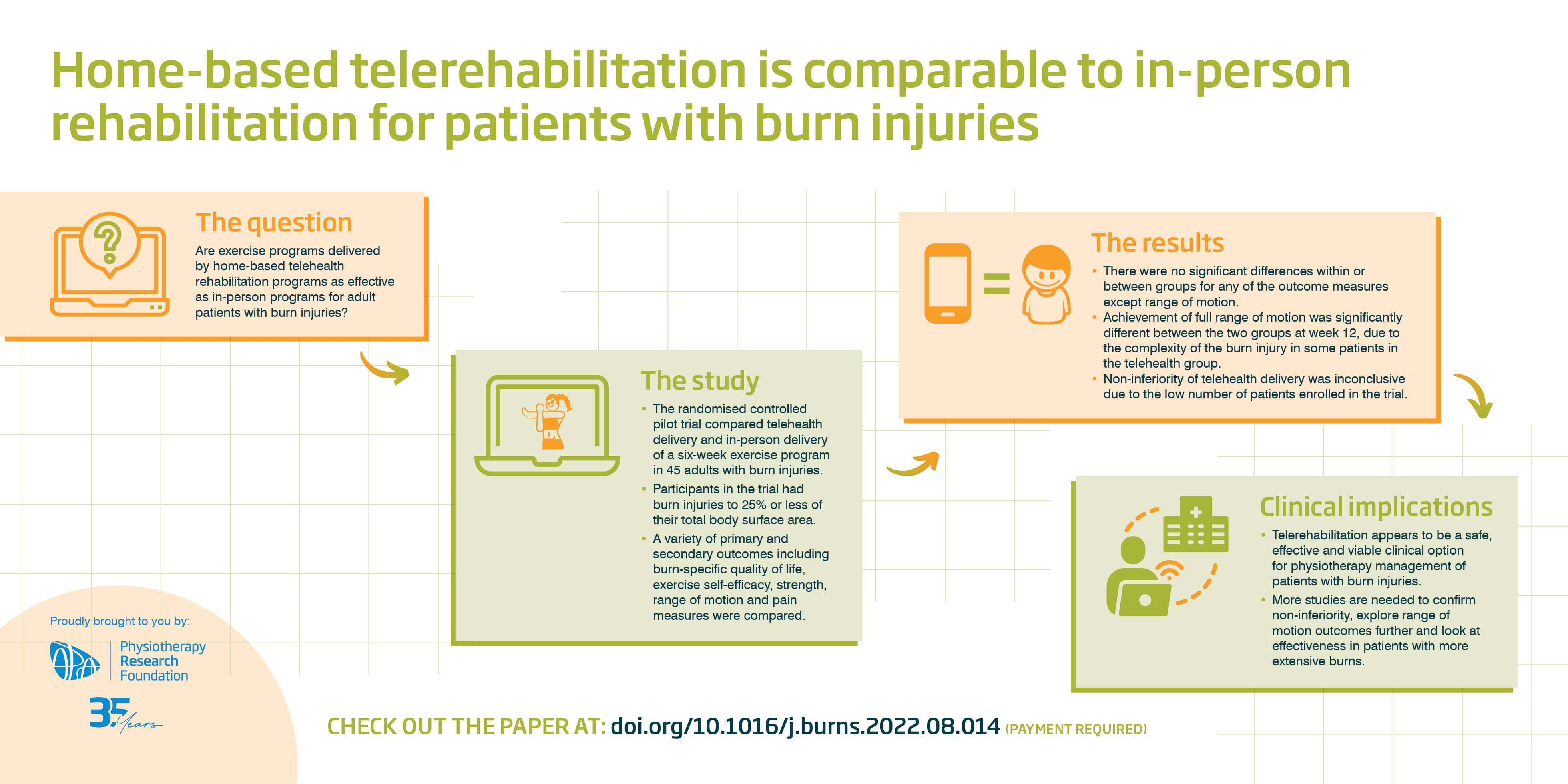Home-based telerehabilitation is comparable to in-person rehabilitation for patients with burn injuries
Physiotherapist-directed exercise is a key component of burns rehabilitation, helping to reduce scar contracture and improve range of motion, muscle strength, exercise capacity and quality of life.
Anita Plaza APAM recently published a paper in the journal Burns comparing telehealth-delivered physiotherapy exercise programs to in-person programs for patients with burn injuries.
The Physiotherapy Research Foundation (PRF) has summarised key messages from the research study’s findings featured in the August edition of InMotion and produced this infographic. To read the research abstract, click here (note: paid access to full article). Click on the image below to access a printable A3 file.
About the authors:
Anita Plaza APAM is a 2020 Physiotherapy Research Foundation (PRF) Seeding Grant recipient, and the statewide physiotherapy consultant based at the Royal Brisbane and Women’s Hospital Stuart Pegg Adult Burns Centre. Anita has 25 years’ experience in burns injury management for adults and children.
Dr Jennifer Paratz APAM, FACP is Associate Professor at Griffith University and a specialist ICU physiotherapist with extensive experience in clinical work, research and teaching. Jennifer's research interests include intensive care management of burns, epidemiology of burn injury, haemodynamics in intensive care and sepsis.
Dr Michelle Cottrell is Associate Lecturer The University of Brisbane, School of Health and Rehabilitation Sciences, and Project Officer for the Spinal Physiotherapy Screening Clinic (SPSC) Telehealth Clinic at the Royal Brisbane & Women's Hospital.
This infographic is a Physiotherapy Research Foundation (PRF) initiative.

